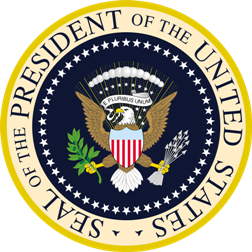Will 2024 See A Drop in the Presidential Popular Vote Count?
The country has seen cycle-to-cycle decreases in the number of votes cast in presidential elections a half-dozen times including four outside of major wars
 Just days ago, the vast majority of likely voters were still displeased with the choices they had been given for the nation’s major party presidential nominees.
Just days ago, the vast majority of likely voters were still displeased with the choices they had been given for the nation’s major party presidential nominees.
But following the assassination attempt on Donald Trump and President Joe Biden withdrawing from the race in favor of an as yet unknown replacement, it now remains to be seen whether the electorate will be more energized to turn out and vote in November.
Much was made last cycle about how Biden was the first winning candidate to notch 70 (let alone 75 or 80) million votes. Trump accurately countered that he also set the record for the most votes won by an incumbent (albeit, in a loss).
Smart Politics previously challenged the notion that these records were particularly remarkable; Biden joined 25 other nominees who had collectively set the record for the most popular votes 35 times over the last two centuries.
Since 1824, the first cycle in which there is reliable data, a new popular vote record by the winning candidate was set in 35 out of 50 cycles, or 70 percent of the time.
Such records are hardly surprising considering – as the decades rolled on – residents were able to vote in new states, the eligible voting electorate expanded (by race, gender, age, criminal history status), and the country continued to mark an increase in population every decade.
But there still have been a few cycles during which the raw vote for president has declined from the previous election.
It should come as little surprise that the first presidential election to see a drop in the number of voters occurred during the Civil War.
In 1860, 4.68 million voters turned out in a race that featured four candidates winning Electoral College votes. Four years later, however, the decimated nation at war with itself saw the number of ballots cast fall 14.2 percent to 4.01 million.
The number of voters would increase through the next nine elections until 1904, when 13.52 million ballots were cast as Teddy Roosevelt defeated Alton Parker.
That marked a decrease of 3.2 percent from 1900 (13.97 million) and was even shy of the 1896 vote count (13.93 million).
Another nine cycles of new raw vote records would pass before the next mid-war vote plunge in 1944.
During that cycle 47.97 million Americans voted in the presidential race between Franklin Roosevelt and Thomas Dewey – a decline of 3.9 percent from 1940 (49.91 million).
[The number of voters would increase in 1948 to 48.79 million which was still shy of the record set at that point in 1940].
The raw vote count then increased in each of the 10 cycles through 1984 reaching a record of 92.65 million as Ronald Reagan trounced Walter Mondale.
However, three of the next nine cycles saw a decrease in the number of voters:
- 1988: Dropping 1.1 percent to 91.59 million
- 1996: Falling 7.8 percent to 96.27 million following the 14.0 percent Ross Perot-inspired boost in 1992 (104.42 million)
- 2012: Decreasing 1.7 percent to 129.23 million from 2008’s tally (131.47 million)
It should be noted that the 15.6 percent increase in the popular vote from 2016 to 2020 was just the third by double-digits since 1964 (along with the aforementioned 1992 cycle and 2004’s +16.0 percent).
Follow Smart Politics on X/Twitter.

– Will this election result in an augmented turnout for the newly-invigorated Democrats (Harris – Andy Beshear? Harris – Roy Cooper?) and a reduced turnout for the Rs?
– In addition to being the first (duly elected) XX and first “Black” (HALF-black, like “Barry” in 2008) POTUS, Kamala Harris, should she win, would become the first Democrat to succeed a fellow Democrat to the office *via an election* since 1856.
– As well, should she garner at least ‘270’ (the trump-vance ticket would need only 269, since its party seems assured of retaining the majority of state delegations in at least 26 States in the House), she would become the first vice president *of a vice president* to reach the presidency via the ballot box (Gerald Rudolph Ford, vice president of “Dick” Nixon, in turn vice president of “Ike”, had never been elected when he became president).